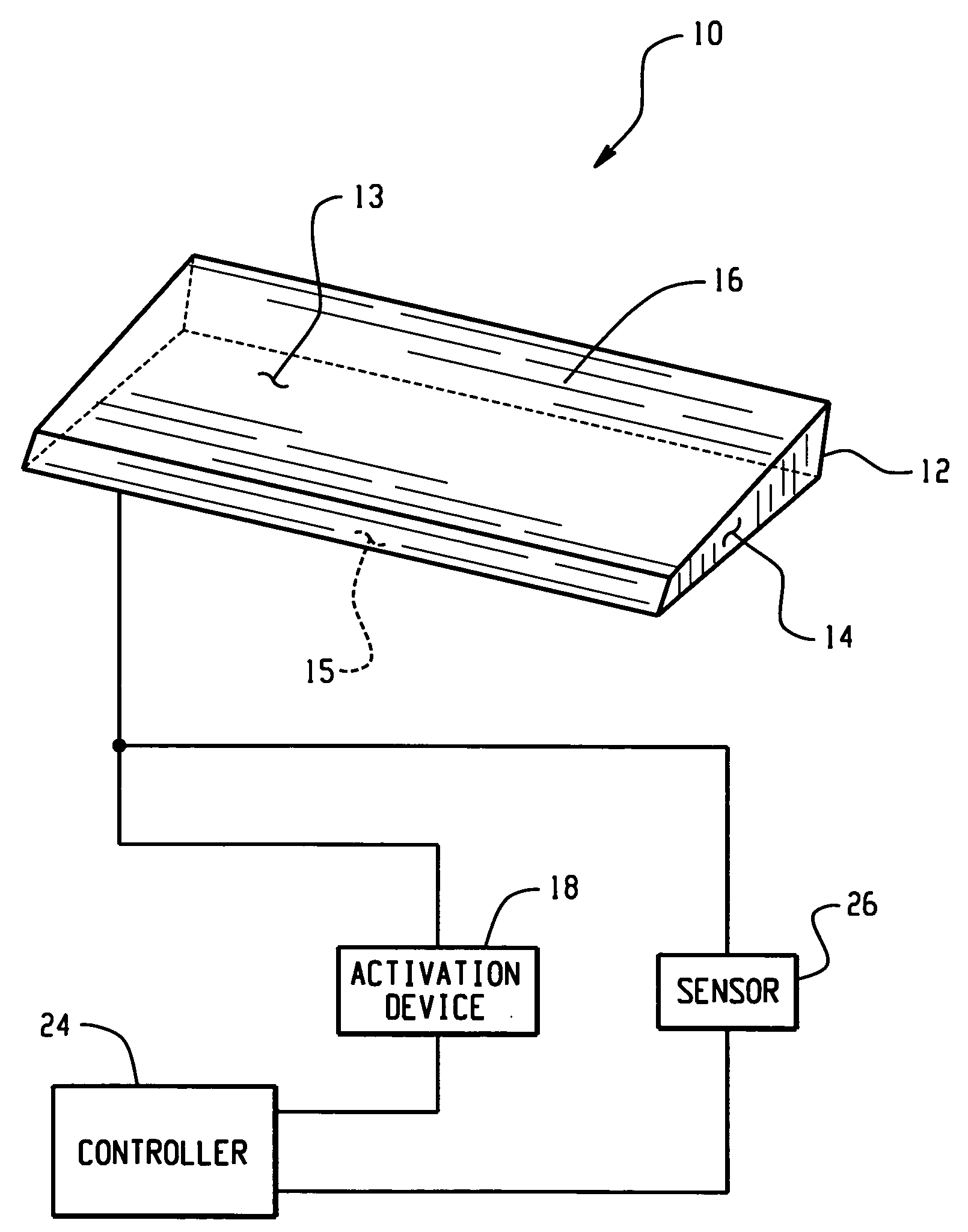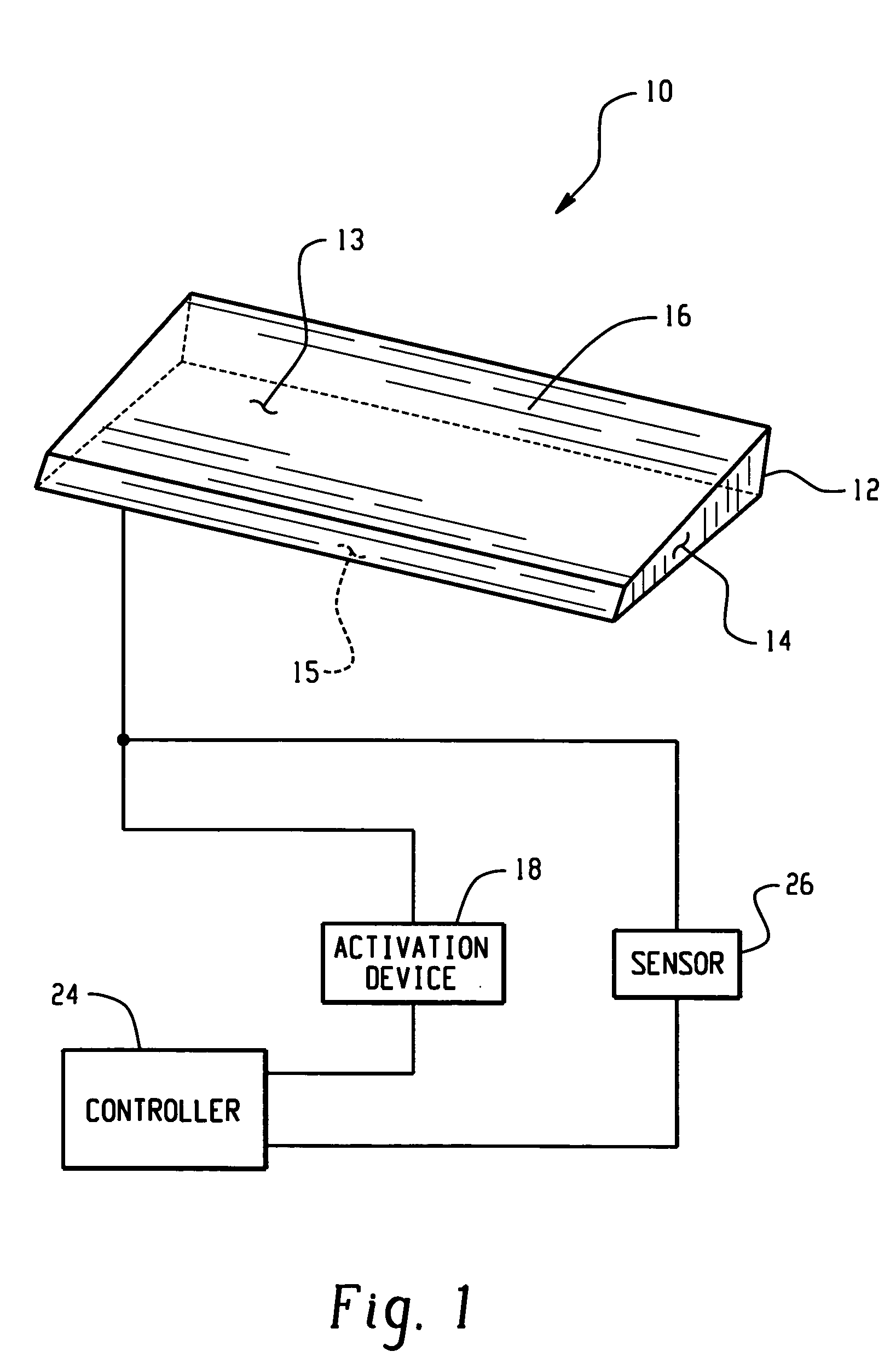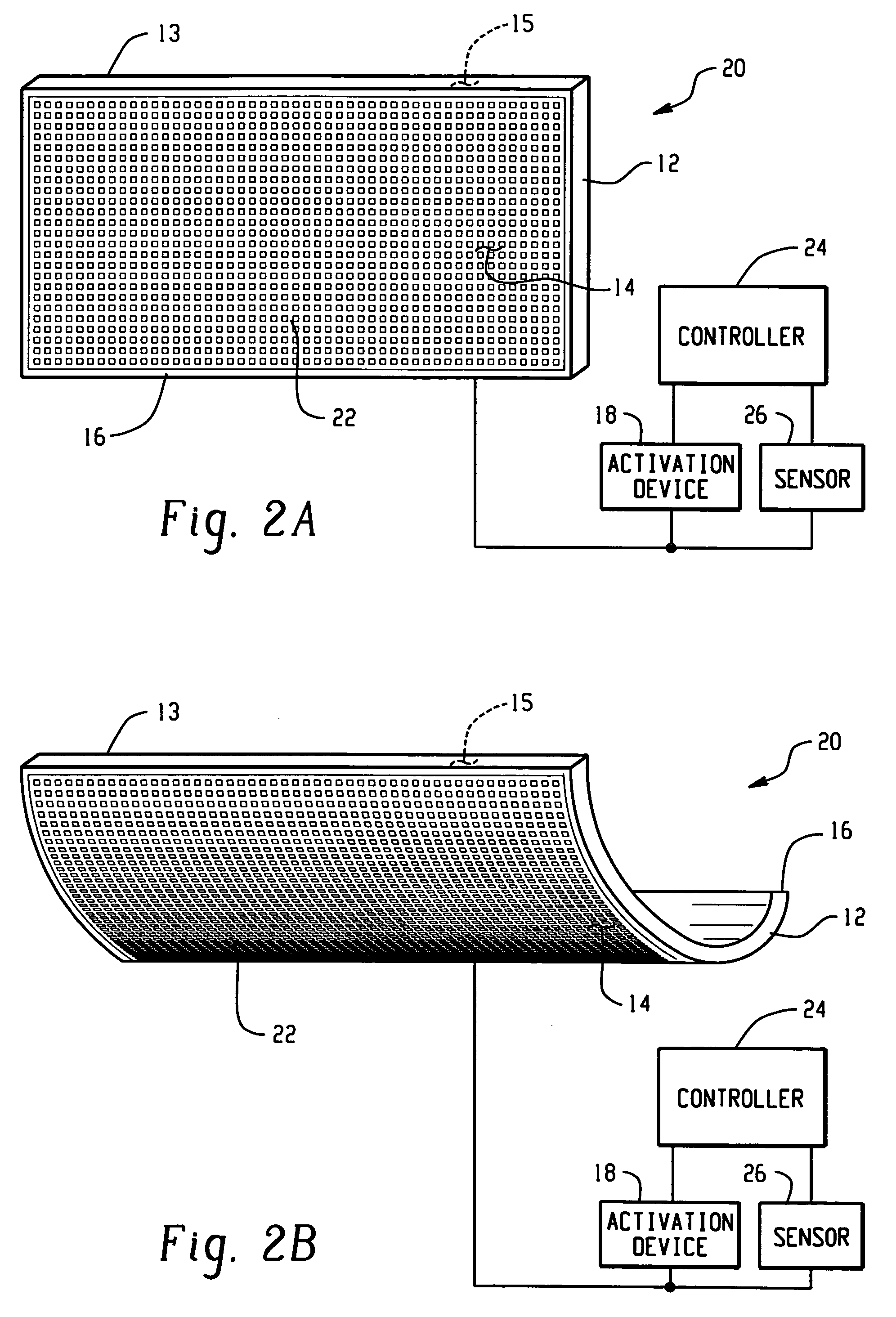Airflow control devices based on active materials
a technology of active materials and airflow control, which is applied in the direction of air-flow influencers, roofs, propulsion parts, etc., can solve the problems of not adapting to the airflow relative to the vehicle cannot be adjusted to better suit the changing driving conditions, and the downforce can affect the stability and handling of the vehicl
- Summary
- Abstract
- Description
- Claims
- Application Information
AI Technical Summary
Benefits of technology
Problems solved by technology
Method used
Image
Examples
example 1
[0062] In this example, the airflow control device can be formed of an active material such as has been previously described in relation to FIG. 1. The airflow device is positioned in a cooperating relationship with the hood and / or the front grill, and / or the underside of the vehicle, and / or the forward portion of the vehicle side. In other words, the airflow device can be positioned anywhere on and / or in the vehicle that will provide a selectively controlled airflow across and through the radiator, fuel cell, fuel cell compartment, engine, and / or engine compartment.
[0063] By way of illustration, the airflow device in the form of louvers can be fabricated from a shape memory polymer. Resistive wires are embedded in the SMP louvers to provide selective resistive heating. The wiring is in operative communication with a control module for selectively introducing current to the wires such as, for example, when the coolant temperature exceeds a threshold value. The current flow would, t...
example 2
[0065] In this example, portions of the airflow control device are formed of the active material. As in Example 1, the airflow device is in the form of louvers and is positioned to provide controlled airflow or increased airflow across and / or through the radiator, fuel cell, fuel cell compartment, engine, and / or engine compartment. The louver can comprise thin strips of a shape memory alloy, for example, that are embedded at regular spaced intervals from top to bottom across a width of the louvers, such as is shown in FIG. 3. The shape memory alloy has a trained curvilinear shape at high temperatures, e.g., temperatures greater than the austenite transition temperature.
[0066] During operation when coolant air is desired, the SMA portions are heated through resistance heating so as to assume their high temperature trained curvilinear shape, which increases airflow through the louvers. The number and size of the SMA portions are chosen to cause deformation of the remaining (non-SMA) ...
example 3
[0068] In this example, louvers can be formed of any suitable material, including but not limited to, thermoplastics, metals, shape memory materials, and the like, and positioned as in Example 1. The louvers are connected to an externally controlled mechanism based on a shaped memory material similar to that shown in FIG. 4. For example, an upper edge of a louver is connected to a rod, which can rotate about its axis to change the relative position of the louver. A conventional spring and an SMA wire are attached to the rod in opposing fashion such that the tensions balance one another. As such, rotation of the rod will cause tension in the rod or the SMA wire depending on the rotation direction.
[0069] At low coolant temperatures, the tension in the spring in combination with the reduced stiffness and increased length (martensite phase) of the SMA maintains the louver in a closed position. Applying sufficient heat to exceed the austenite transition temperature causes stiffening and...
PUM
 Login to View More
Login to View More Abstract
Description
Claims
Application Information
 Login to View More
Login to View More - R&D
- Intellectual Property
- Life Sciences
- Materials
- Tech Scout
- Unparalleled Data Quality
- Higher Quality Content
- 60% Fewer Hallucinations
Browse by: Latest US Patents, China's latest patents, Technical Efficacy Thesaurus, Application Domain, Technology Topic, Popular Technical Reports.
© 2025 PatSnap. All rights reserved.Legal|Privacy policy|Modern Slavery Act Transparency Statement|Sitemap|About US| Contact US: help@patsnap.com



